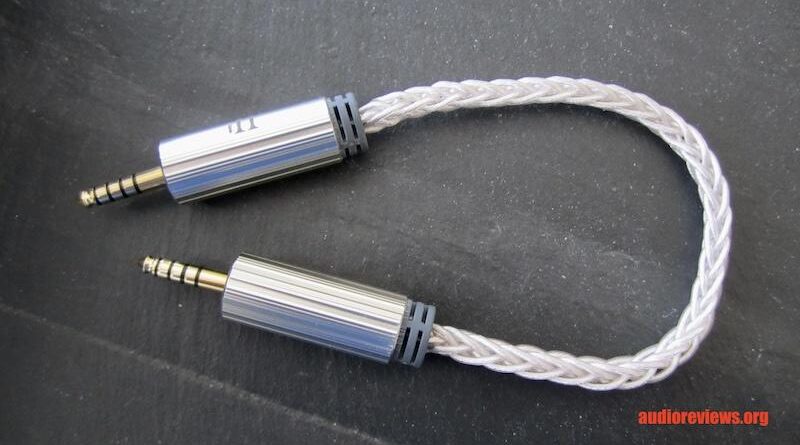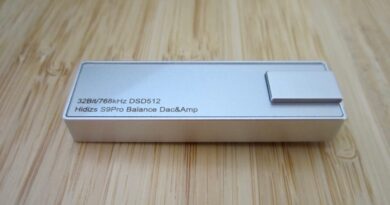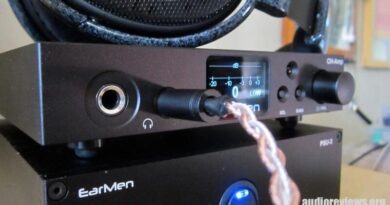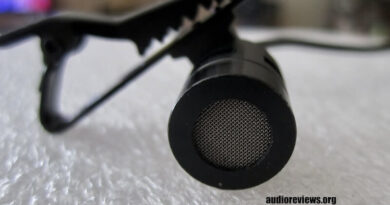ifi Audio 4.4 mm to 4.4 mm Pentaconn Cable Review – Piece Of Mind
The ifi Audio 4.4 mm to 4.4 mm Pentaconn copper-silver cable is well designed and haptically outstanding audio cable connecting your Zen devices, or any balanced DAP/DAC to any balanced amp.
PROS
- Good signal transfer
- Well designed
- Well built
CONS
- Pricey for some
In this Article
Introduction
Audiophiles love cables with XLR connectors. When you connect your devices with them you hold something substantial in our hand. Or it is cumbersome, depending how you look at it. XLR sockets only fit onto relatively large devices. But what when the manufacturer builds small like the Zen series, and what if you want to connect your balanced DAP to a portable balanced amp?
Balanced circuits in portable devices started out with the 2.5 mm socket. It didn’t prove sturdy so that a compromise was found between these and XLR…and 4.4 mm Pentaconn was born. There are still relatively few desktop devices with 4.4 mm balanced circuits around, and hence also not many Pentaconn cables. You find 4.4 mm jacks mostly in DAPs.
AudioQuest, one of the market leaders in premium cables don’t have a single one in their catalogue.
ifi Audio, the well known premium Hifi manufacturer from northern England took matters in their own hands. They needed balanced connectors for their Zen line, and came up with the current 4.4 mm to 4.4 mm design. And since they never do anything half-baked, they added quality…that also comes at a price.
Please have a very good look at the specs (and their product page), which may be a bit confusing. I will explain all important details in easy terms below.
Specifications
| Wire Material/Conductor: 5N oxygen-free OFHC continuous cast copper + 5N platinum pure silver Wire thickness: 14 AWG Connectors: ifi Audio’s proprietary gold-plated smooth surface 4.4 mm connectors Shielding 1: RoHs compliant super-soft (60 P) polymer jacket for optimal insulation Shielding 2: proprietary minZTM helix construction for minimising capacitance and inductance Insulation resistance: 1000 Mohm AC Spark Insulation: 1500 V Cable Length: 30 cm (11.8″)) end to end (26 cm when plugged in, 18 cm pure cable between connectors) Tested at: $69 Product Page: ifi Audio |
Some Explanations
The cable’s description on the product page is quite a mouthful and I try to explain some of the technical description in layman’s terms. Obviously, the best cable is no cable at all and a good cable serves the purpose of minimising signal deterioration by optimising signal transfer and minimising signal contamination. It cannot improve anything.
Such contaminations are mostly “Electromagentic Interference” (EMI) and “Radio-Frequency Interference” (RFI), which come from the host DAC and amp, and from adjacent wires inside the cable. These typically result in a muddled sound with reduced transparency. Oxidization of the wire also causes signal deterioration.
Let’s have a look at ifi Audio’s terms used:
4N Oxygen-free copper (“ultimate conductivity and corrosion resistance”) and 5N Platinum pure silver (“minimal skin effect “uneven distribution of electric current” and impeccable audio signal transmission”): The “N” number in 4N refers to degree of copper purity. 4 refers to four nines as in 99.99% pure copper (5N means 99.999% and so on).
OFHC stands for Oxygen Free High Conductivity (copper) and continuous casting is a metal casting process that produces continuous lengths of metal, with a constant (2D) cross-section. Oxgygen molecules between copper crystals can cause oxidization and should be avoided.
As to shielding, capacitance and inductance should be as low as possible. Capacitance describes the ability of two conductors, separated by an insulating material, to store charge. It leads to a delay causing interference in the signal transmission. The longer a cable, the larger is its capacitance, which leads to a warmer, duller sound. Lower capacitance results in more transparency and more pronounced treble.
Inductance is the tendency of an electrical conductor to oppose a change in the electric current flowing through it. The electric current produces a magnetic field around the conductor. Cable inductance is a prime cause of high-frequency attenuation and phase shift. Inductance causes impedance to rise with frequency, resulting in attenuation of the very upper frequency range. BUT: inductance is proportional to cable length and should be negligible at 30 cm.
Also important for shielding is braiding so that these individual cable strands have minimal touching areas.
RoHS stands for Restriction of Hazardous Substances, and impacts the entire electronics industry and many electrical products as well.
Physical Things and Usability
For the physical details I refer you to the Specifications above and the cable’s product page. In short, the 30 cm long copper-silver cable is braided, dirt repelling, and very pliable. It is well shielded, has good transmission capabilities, and deploys proprietary, gold-plated connectors. Compared to other 4.4 mm cables, it is big – from the connectors to the actual cable. Haptic is outstanding! On paper and in my hands, this cable is excellent.
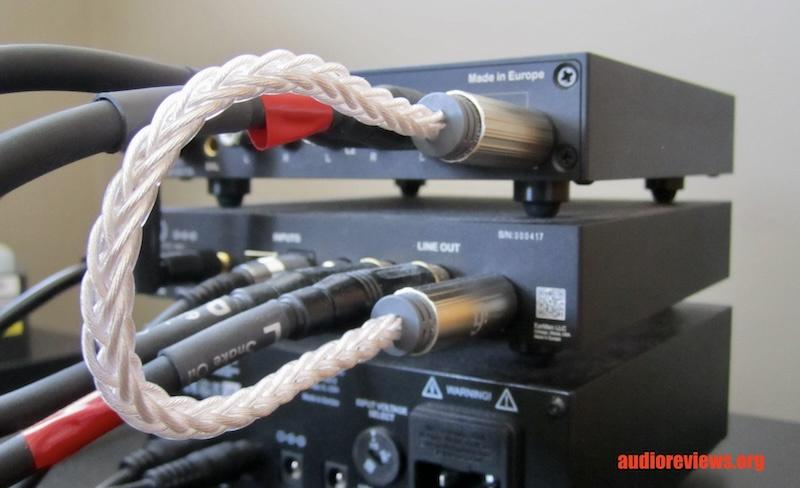
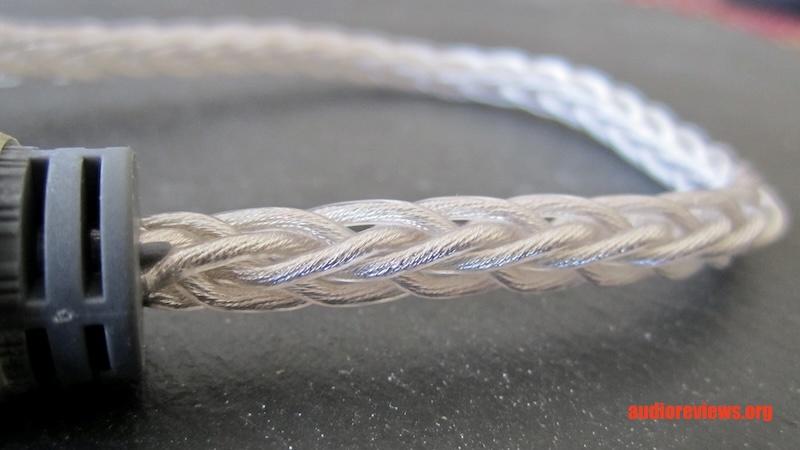
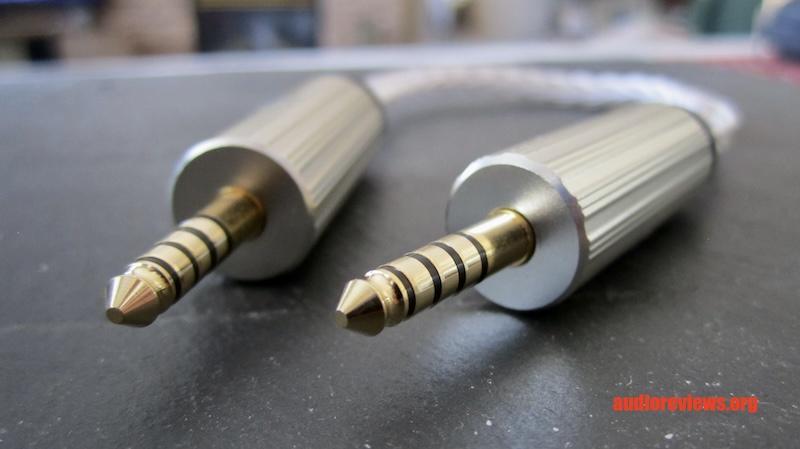
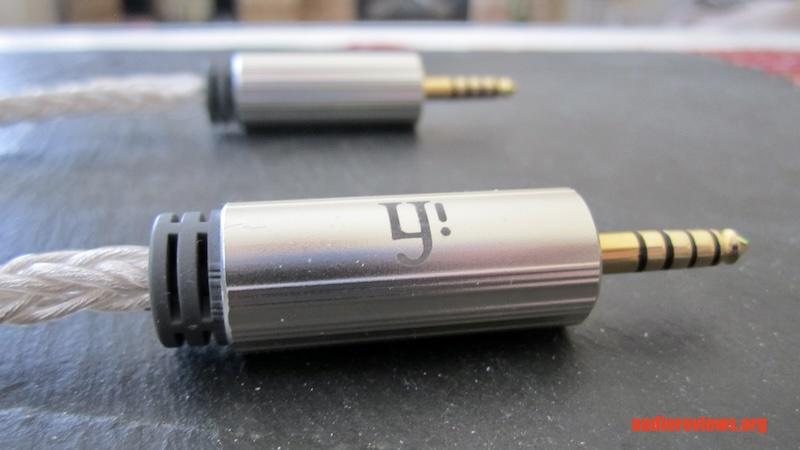
Sound using the ifi 4.4 mm Cable
This is a truly difficult one. In every cable test I have read, the tested cable is better than the ones it is compared to…and people dream up the weirdest sonic details. In reality, you can only get a reliable result when you can truly A/B this cable against another one at the switch of a button, best in a blind test to eliminate expectation bias. The results are only valid for this particularly test setup – and not universal.
Also, don’t forget, one cable is only one piece in the puzzle.
Testing any two or more 4.4 mm Pentaconn cables using the ifi Audio Zen series (or the EarMen stack, as in my case), requires exchanging cables…and comparing them by memory. Unless the differences are huge, only the fewest people are capable of reliably comparing this way, and I am not one of them.
My EarMen stack (Tradutto DAC|CH-Amp) gives me the option to A/B the balanced circuit against the single-ended circuit on the push of a button, which does not really help considering the differences in the circuits alone. BUT, I can use a headphone with a single-ended cable for A/B-ing between balanced and single-ended circuits (the balanced circuit, in this case, works single ended).
Comparing two 4.4 mm Pentaconn cables, the ifi Audio one against the much shorter $31 Hart Audio model (with oxygen-free Megami copper but no visible braiding) using the Sennheiser HD 600 headphone, under the given circumstances, I could not determine any huge sonic differences from memory (although they may exist). But the difference in build quality between the Hart Audio and the more elaborate ifi Audio may justify the price difference (ever more so when factoring in the free shipping of the ifi Audio cable)..
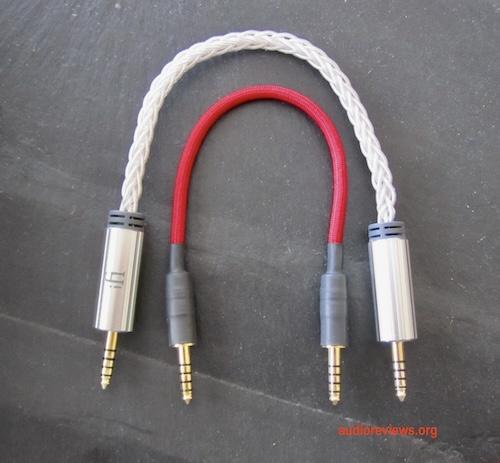
Using the Beyerdynamic Custom Pro headphone with its single-ended cable, I downgraded the EarMen’s balanced circuit and the ifi Audio cable to single ended. Now I could truly A/B with the single-ended circuit on the push of a button. The RCA interconnects I compared the ifi audio cable, were Snake Oil Taipan, which consist of amphenol connectors with German 0.5 mm2 Sommer cable between them. Good quality, too.
The differences were small. I recorded none in the bass, the differences were in the upper midrange and treble. The Snake Oil cable reproduced this part of the frequency spectrum more boisterously, the ifi audio cable offered a slightly mellower, more composed reproduction with more rounded corners. Whatever you prefer.
As said, this test is only valid for my setup. You may get different results with yours.
Concluding Remarks
The ifi Audio 4.4 mm to 4.4 mm cable is a well constructed product serving a small market. It may be pricey but there is likely no higher-quality option. This cable is for people do not want to make any technical compromise and who have a sense of attractive design. It is for their peace of mind.
Until next time…keep on listening!

Disclaimer
Our generic standard disclaimer.



